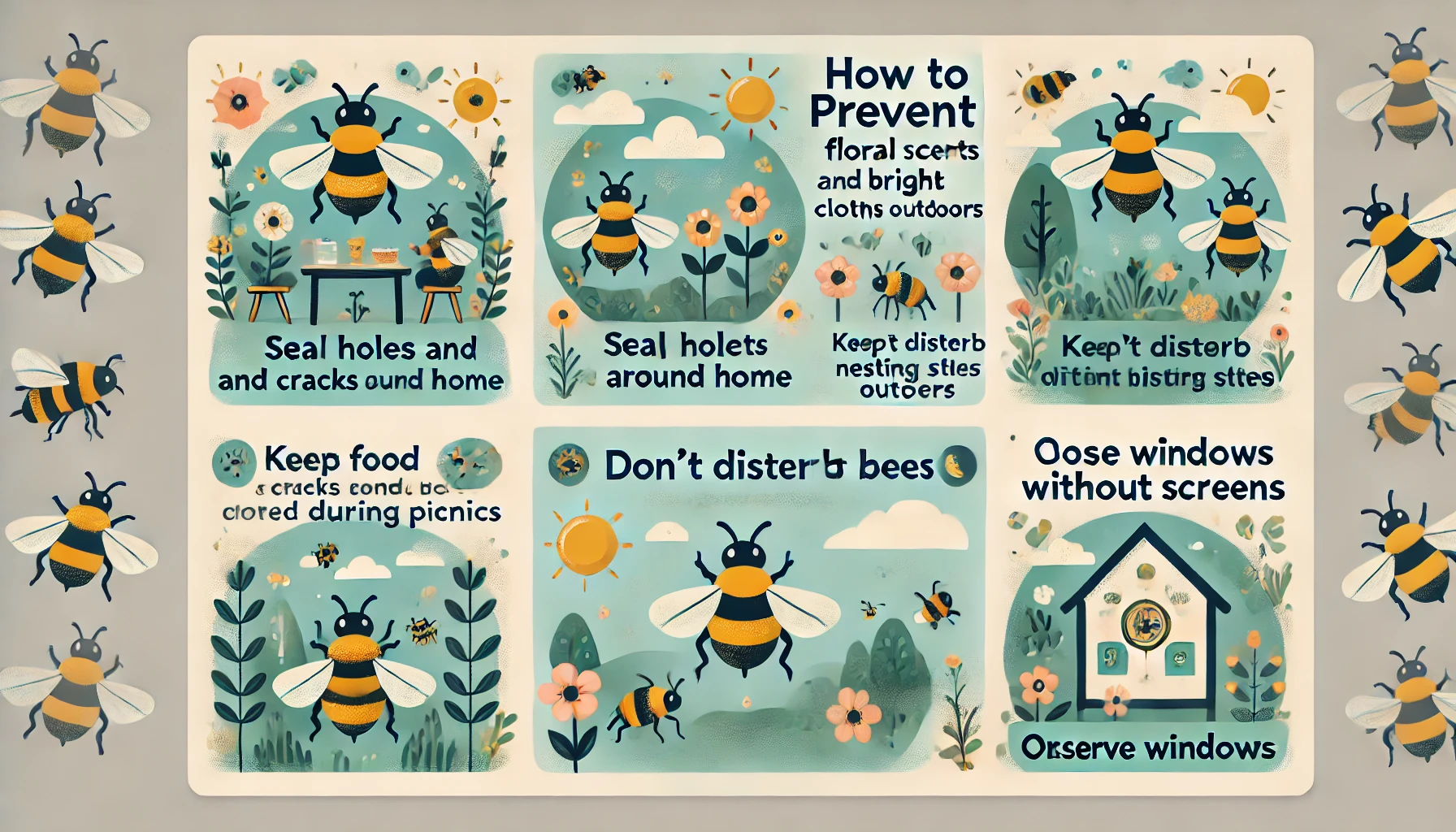Key Takeaways
- Bumble bees don’t leave their stingers behind after stinging.
- They can sting multiple times and are generally gentle insects.
- Immediate sting treatment helps minimize discomfort and swelling.
- Prevention strategies significantly reduce the likelihood of stings.
- Professional pest control is recommended for managing problematic bumble bee nests safely.
 If you ever sting a bee, you probably wonder if the bee will leave its stinger behind. While this honey is true for bees, the story with bumbled bees is quite different. So, does the bumbled bees leave your sting in you? The simple answer is no. Unlike honey bees, bumbled bees contain smooth stinger which are not separated when stinging.
In this article, we’ll clarify common myths, explain why bumble bees don’t leave their stingers, discuss their behavior, and provide valuable tips on what to do if you ever get stung. We’ll also share ways to prevent bumble bee stings and advise when it might be time to call a pest control professional.
If you ever sting a bee, you probably wonder if the bee will leave its stinger behind. While this honey is true for bees, the story with bumbled bees is quite different. So, does the bumbled bees leave your sting in you? The simple answer is no. Unlike honey bees, bumbled bees contain smooth stinger which are not separated when stinging.
In this article, we’ll clarify common myths, explain why bumble bees don’t leave their stingers, discuss their behavior, and provide valuable tips on what to do if you ever get stung. We’ll also share ways to prevent bumble bee stings and advise when it might be time to call a pest control professional.
Bumble Bees vs. Honey Bees: The Real Difference
- It’s easy to confuse honey bees and bumble bees, but when it comes to stinging, their differences are significant:
-
Honey Bees: They have barbed stingers that stay in the skin, causing the bee to die after stinging.
-
Bumble Bees: Their smooth, needle-like stingers let them sting multiple times without harm to themselves.


Not getting a solution?
Get your free pest control estimate today!How Often Do Bumble Bees Sting?
While bumble bees can sting multiple times, they’re typically very gentle and non-aggressive insects. Most encounters between humans and bumble bees are peaceful, with bees preferring to focus on pollinating flowers rather than bothering people. Bumble bees are crucial in pollinating various plants and flowers, helping maintain ecological balance. A bumble bee will usually only sting if it feels threatened, such as:- Accidentally stepping on a bee while barefoot.
- Grabbing or squeezing a bee unintentionally.
- Disturbing their nests, which are often hidden in lawns, under decks, or within garden sheds.
What to Do if You Get Stung by a Bumble Bee
- Although bumble bee stings can be painful, they’re generally not serious unless you’re allergic. Here’s how to quickly treat a bumble bee sting:
-
Stay Calm: Remaining calm helps prevent the venom from spreading more quickly through your body.
-
Check the Area: Bumble bees usually don’t leave a stinger, but always inspect the site to be sure.
-
Clean the Sting Site: Wash with soap and water to reduce infection risk.
-
Apply Ice: Use an ice pack for about 10 minutes to reduce pain and swelling.
-
Ease Discomfort: Apply anti-itch creams or take pain relievers like ibuprofen to alleviate symptoms.
-
Home Remedies: A baking soda paste can neutralize venom and help soothe irritation.
-
Monitor Your Reaction: Watch for severe symptoms like swelling, dizziness, or difficulty breathing and seek medical help if needed.

How to Prevent Bumble Bee Stings
- Most bumble bee stings can be avoided by taking a few simple precautions:
-
Keep Your Distance: Avoid disturbing bees and teach children and pets to give them space.
-
Move Slowly: Avoid swatting or fast movements which may provoke a sting.
-
Wear Protective Clothing: Wear gloves, long sleeves, and shoes while gardening or mowing.
-
Check Before You Touch: Inspect plants, equipment, or furniture before using them, as bees may be resting nearby.
-
Avoid Strong Scents: Steer clear of perfumes and bright colors that may attract bees.
-
Maintain Your Yard: Fill ground holes and monitor garden areas to deter nesting near active spaces.

Bumble Bee Nests: When to Get Professional Help
- Bumble bees are beneficial pollinators, and having them around your garden is usually a good thing. However, there are circumstances where a bumble bee nest might become problematic:
-
Location Concerns: Nests near doors, play areas, or busy walkways pose a higher risk for stings.
-
Allergy Risks: If someone in your home is allergic to bee stings, it may be safest to remove or relocate the nest professionally.
If you feel things have gone out of control, it is advised to contact pest control professionals. Our team can provide a customized approach to protect your home effectively.
Visit our Species, Control, and DIY Guide sections for additional resources on bumble bees and ways to tackle a bumble bees infestation.





